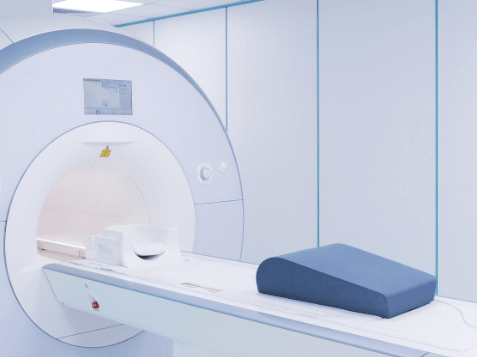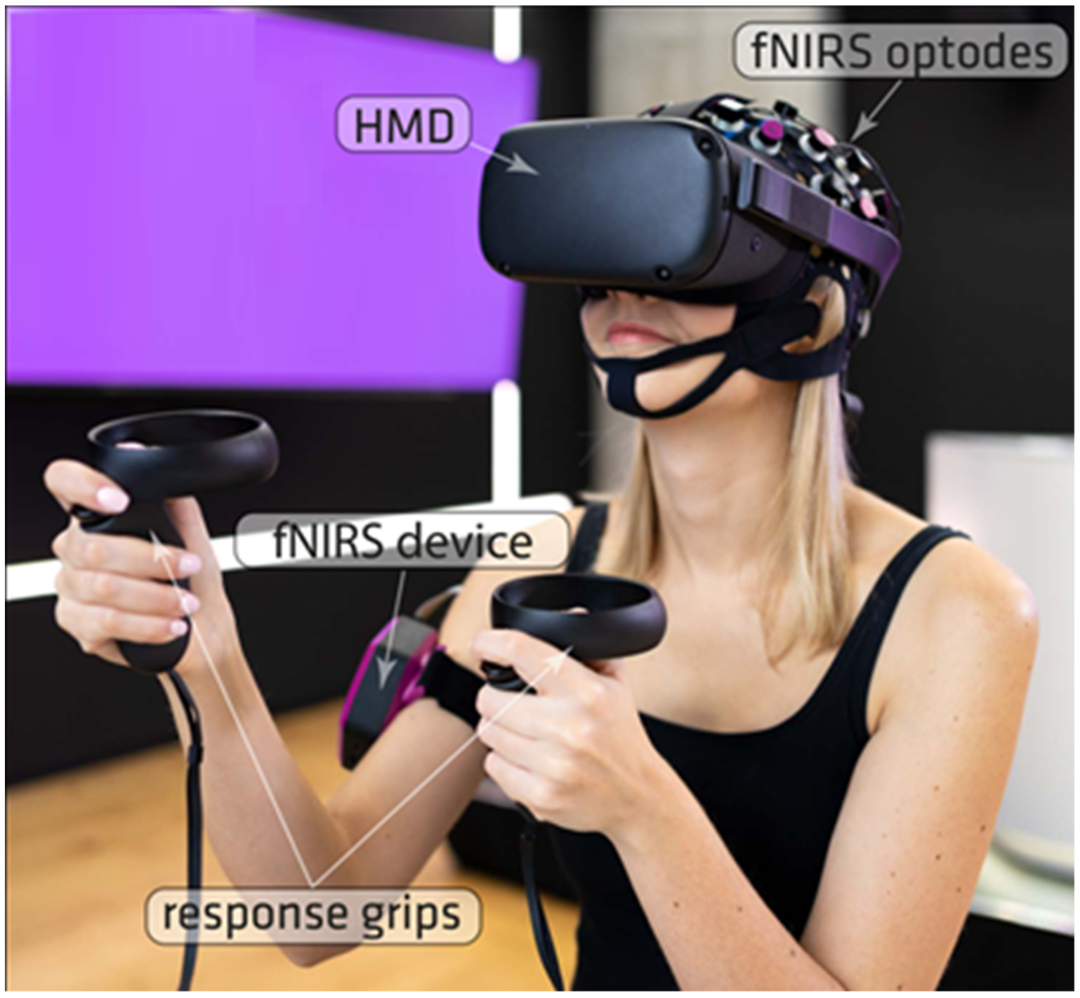Human Factors Engineering Empowering a New Era
Hengzhi Technology provides one-stop service for the whole industry chain in brain science, ergonomics, interaction design, neurophysiology, psychology and other disciplines.
Why Choose Us
Specialties
The team building of our technical engineers is mainly with graduate degree, from product sales to after-sales service, our company is based on the values of solidity, development, loyalty, unity and innovation, respecting talents, stabilizing strength, and diligently providing solutions to meet customers' needs with high quality products and hot worry service.
Efficient
We have a professional customer service call center that responds quickly and provides 24/7 product and technical usage consulting services 24 hours a day, 365 days a year, making it easy for you to stay in touch with us at all times. No matter what problems you encounter, we will be ready to answer your questions and provide support.
Sincerely
We are adhering to the tenet of "always be sincere to our customers" and have always put customer experience and satisfaction in the first place. We provide one-stop service for the whole industry chain, such as psycho-human factors, driving human factors, biomechanics, user experience and virtual reality.
About Hengzhi
(hereinafter referred to as "Everloyal"), invested by China Science (Guangdong) Science Group Limited, relying on Guangdong Institute of Human Factors Technology and Wuhan Institute of Human Factors Engineering and Technology, is a new type of science and technology enterprise based on psychological human factors, driving human factors, biomechanics, user experience, virtual reality and other directions, integrating production, research and development, sales and technical services.
Hengzhi technology independent research and development driving human factors system, virtual reality graphical editing software, light environment psychological assessment system, psychological and human factors experimental teaching system, at the same time as the Polish Cortivision near infrared, China's general agent, Italy's BTS surface electromyography, such as biomechanics and gait analysis of scientific research products, the Netherlands Noldus Behavioral Science, Sweden, Tobii eye-tracking instrument, The Netherlands Noldus behavioral science, Sweden Tobii eye movement device, the Netherlands MindMedia physiology and biofeedback, the United States Biopac physiology, the United States ETT olfactory / gustatory stimulation device and other products agent. We have served Tsinghua University, Beijing Normal University, Northeast Normal University, Yanshan University, Qiyuan Laboratory, Xi'an University of Architecture and Technology, Northwest Agriculture and Forestry University, Shenzhen University of Technology, Xi'an University of Science and Technology, Shanghai University, Inkwell, NetEase, 27th Institute of China Electronic Science and Technology Group (CETG), 28th Institute of China Electronic Science and Technology Group (CETG), Huawei Technology, Second Space Academy, etc. We have continued to carry out in-depth cooperation in the areas of talent training, scientific research cooperation, and achievement transformation. Transformation and other aspects of the continued in-depth cooperation.
We are a positive team, focused on cooperation and communication, energetic and creative. We believe in each other's abilities and potential, encourage mutual learning and growth, and work together to achieve the team's goals and vision. Working with enthusiasm and motivation, overcoming difficulties and challenges, being innovative and experimental, and constantly pursuing excellence and progress!
Company purpose: do not forget the original intention, "constant" - "sincere"

Our Product Line

Psychological Human Factors
Psychology is a basic science and an important method for human factors research. We provide equipment and solutions that meet the needs of applications in basic psychology, human factors engineering, human-computer interaction, user experience, and consumer behavior, and support customized solutions, including laboratory design.

VR Virtual Reality
Virtual reality technology is widely used in scientific research and production, and we provide virtual reality total solutions, including vision solutions, motion capture peripherals, virtual reality engines, software and scene customization and other equipment and services, involving film and television, industry, psychology, education and other fields.

Brain Science
Brain science is the frontier science to study human mysteries. We provide full-dimensional brain science research equipment, including ERP/EEG EEG equipment, fNIRS NIR brain imaging system, tES transcranial electrical stimulation equipment, TMS transcranial magnetic stimulation and other equipment, and provide integrated solutions.

Driving behavior study
Driving research has many different application scenarios, including automotive HMI, autonomous driving, ADAS, and traffic safety. We provide full-scenario solutions to meet these needs, including real-road and real-vehicle testing, simulation testing, data collaboration, etc.

Biomechanics
Biomechanical studies require multi-dimensional data such as kinematics, kinetics and physiology. We provide users with full-dimensional, full-scene equipment and solutions such as motion capture, 3D ergometry tables, ergometric running tables, body surface electromyography, muscle oxygen and stress distribution testing equipment.

Human Factors Engineering
Ergonomics is a science based on psychology, physiology, anatomy, anthropometry and other disciplines, which studies how to make the design of human-machine-environment system conform to the physiological and psychological characteristics of human, so as to achieve the best match between human, machine and environment, and make people work and live safely, healthily, effectively and comfortably.
Product Center

Psychocognitive and Brain Science Products

Drivers due to with virtual reality products

Behavioral Science Products

Biomechanical Products

Neuromodulation and Stimulation Products

Nuclear magnetic compatible products
News

Attentional state recognition in virtual reality environments
Read more...

Invitation Letter|Neural Engineering Management Colloquium Workshop (Round 1)
3、Time and place Time: June 3, 2023 Venue: Chongqing University (174 Shazheng Street, Shapingba District, Chongqing, China) Note: This workshop will be held in conjunction with the First Symposium on Neuroengineering Management, and there is no fee for the workshop.
4、Workshop content Time Lecturer Content Summary June 3, 15:00-16:00 Shan Keqiu Application of psychological techniques in neuroengineering management and case studies Practical application of NIR, EEG and eye movement techniques in neuroengineering management June 3, 16:10-17:10 Can Jin Principles and characteristics of eye movement, EEG and NIR techniques A detailed introduction to the principles and characteristics of EEG, NIR and eye movement techniques. Detailed introduction June 3, 17:10-17:30 Shan Keqiu, Jin Can Discussion and demonstration of the instruments and trial operation of the relevant instruments 5、Lecturer introduction Shan Keqiu: Theoretical consultant of Beijing Hengzhi Technology Co., Ltd, Master of Psychology of Dublin University Jin Can: Theoretical consultant of Beijing Hengzhi Technology Co. 6、Workshop Contact Xia Haiyan:18911883058 Li Jiahua:18500350004 II. Graduate Student Innovation Fund Ltd. will fund the "Hengzhi-Neural Engineering Management Seminar Postgraduate Research Innovation Fund" (5000/item for PhD students and 3000/item for master students), and will provide differential funding to the students who participate in the postgraduate forum. 1. Name of the fund. Everloyal-NME-202301) 2、Number of people funded. Doctoral Research Innovation Fund: 3 persons, RMB 5,000 each Master's Research Innovation Fund: 5 persons, RMB 3,000 each 3、Fund content. (1) This fund is jointly established by Beijing Hengzhi Technology Co., Ltd. and the Academic Committee of Neuroengineering Management Symposium to support young researchers in the field of neuroengineering management-related research. (2) Beijing Hengzhi Technology Co., Ltd. provides necessary scientific training and services to the postgraduate research innovation fund supporters, and gives priority to providing support in equipment rental, experimental assistance, data analysis, etc. (3) The fund project funds will be directly allocated by Beijing Hengzhi Technology Co., Ltd. to the researcher's unit and managed as a joint scientific research project, and the research results published under the project funding should be marked as fund project - horizontal. (4) Beijing Hengzhi Science and Technology Co., Ltd. will assist in the industrial transformation of the innovative achievements in the field of neural engineering management and promote the cooperation between industry, academia and research. (5) The project funding period will last for one year from the establishment of the project, and a special sub-forum will be set up in the "Second Symposium on Neuroengineering Management" for the postgraduate research innovation fund, and the project funders will be invited to make a summary report. III.Neural Engineering Management Symposium Conference Information The conference will be held offline and the basic information of the conference is as follows Hosted by Neuroengineering Management Research Committee
Undertaker. School of Management Science and Real Estate, Chongqing University International Research Center for Sustainable Construction, Chongqing University Co-organizers. School of Civil Engineering and Water Resources, Tsinghua University Department of Construction and Real Estate, Hong Kong Polytechnic University Department of Architecture and Civil Engineering, City University of Hong Kong School of Civil Engineering, Tongji University School of Management, Shanghai University School of Civil Engineering and Mechanics, Jiangsu University School of Civil Engineering and Mechanics, Xi'an University of Architecture and Technology School of Management, Chongqing University Research Base of Language Cognition and Language Application, Wuhan Institute of Human Factors Engineering and Technology, Beijing Hengzhi Technology Co. Note: This seminar is exclusively supported by Beijing Hengzhi Technology Co. 1、Time and place (1) Conference Venue: Chongqing University, School of Management Science and Real Estate Building (2) Conference Program: June 3, 2023 - June 4, 2023 (3) Deadline for submission of long abstracts: April 15, 2023 2、Conference theme (1) Research on neural engineering management (2) Research on "human-centered" engineering management 3、Conference organization ...
Read more...

Northwest A&F University of Science and Technology | Behavioral Economics and Policy Simulation Lab is officially put into use, and Hengzhi Technology is helping to build it
In the morning of February 26, dozens of experts from many universities in China, such as Zhejiang University, Renmin University of China, China Agricultural University and Huazhong Agricultural University, visited the site in person. While experiencing virtual scenes and marveling at the charm of science and technology, they put forward many constructive and valuable suggestions on how the laboratory can be combined with the agricultural and forestry economic management disciplines and applied to scientific research.
In this regard, Professor Ren Yanjun reported in detail the basic situation of the laboratory construction, operation and management ideas and future development direction. The delegation experienced the virtual (VR) reality Cave system, the Cortivision blood oxygen fusion imaging system in Poland, the Tobii ophthalmoscope in Sweden and other experimental equipment, and expressed full affirmation of the laboratory construction work. At the same time, they made corresponding suggestions on laboratory management, future development, talent training, equipment maintenance, etc. They also hoped that the laboratory would adhere to the basic concept of interdisciplinary and cross-border integration, base on the frontier of disciplines, enhance the domestic competitiveness and international influence of the first-level disciplines mainly in agriculture and forestry economic management, cultivate high-quality talents and produce high-quality research results.
Link to original article. Focus on Economics and Management | Behavioral Economics and Policy Simulation Lab Opens
Company Profile Beijing Hengzhi Technology Co., Ltd, invested by China Science (Guangdong) Science Group, relying on the technical background of Guangdong Institute of Human Factors Technology and Wuhan Institute of Human Factors Engineering Technology, is a new type of high-tech enterprise based on psychological human factors, driving human factors, biomechanics, user experience, virtual reality and other directions, integrating production, research and development, sales and technical services, has been successfully selected in Zhongguancun High-tech enterprise list.
The driving human factors system, virtual reality graphic editing software, light environment psychological assessment system and psychological and human factors experimental teaching system developed by Hengzhi Technology have entered the domestic market. As the sole agent of Poland Cortivision NIR, Russia Mitsar EEG in China, the sole agent of Italy BTS surface electromyography and other biomechanical and gait analysis products in China, and the sole agent of Netherlands Noldus Behavioral Science, Sweden Tobii Eye Motion Instrument, Netherlands MindMedia Physiology and Biofeedback, US Biopac Physiology, US ETT The domestic licensed agent of products such as olfactory/taste stimulator. The high-tech products operated have served the top universities and the highest level of scientific research units in China, including Tsinghua University, Beijing Normal University, Northeast Normal University, Yanshan University, Qiyuan Laboratory, Xi'an University of Architecture and Technology, Northwest Agriculture and Forestry University of Science and Technology, Shenzhen University of Technology, Xi'an University of Science and Technology, Shanghai University, the Second Institute of Aerospace, 27 and 28 of China Electronics Technology Group, while providing technical support for ink Netease, Huawei technology to provide technical support, in the field of talent training, scientific research cooperation, transformation of results and other scientific and technological areas of continuous in-depth cooperation.
Follow us: This article comes from the WeChat public number: EVERLOYAL ...
Read more...

Robots walk like people! Cross research at East China Normal University hits the algorithm key
Read more...








































